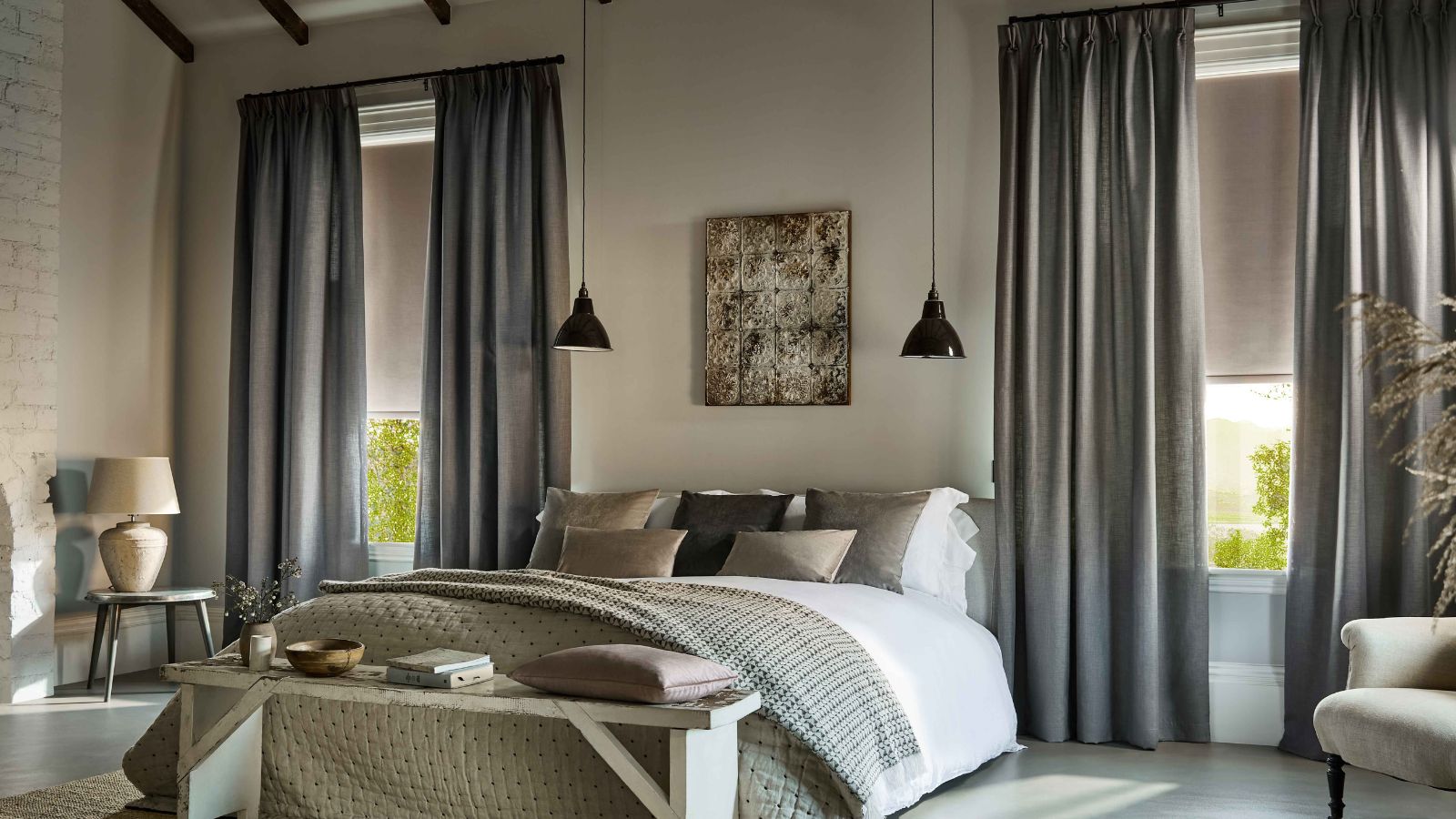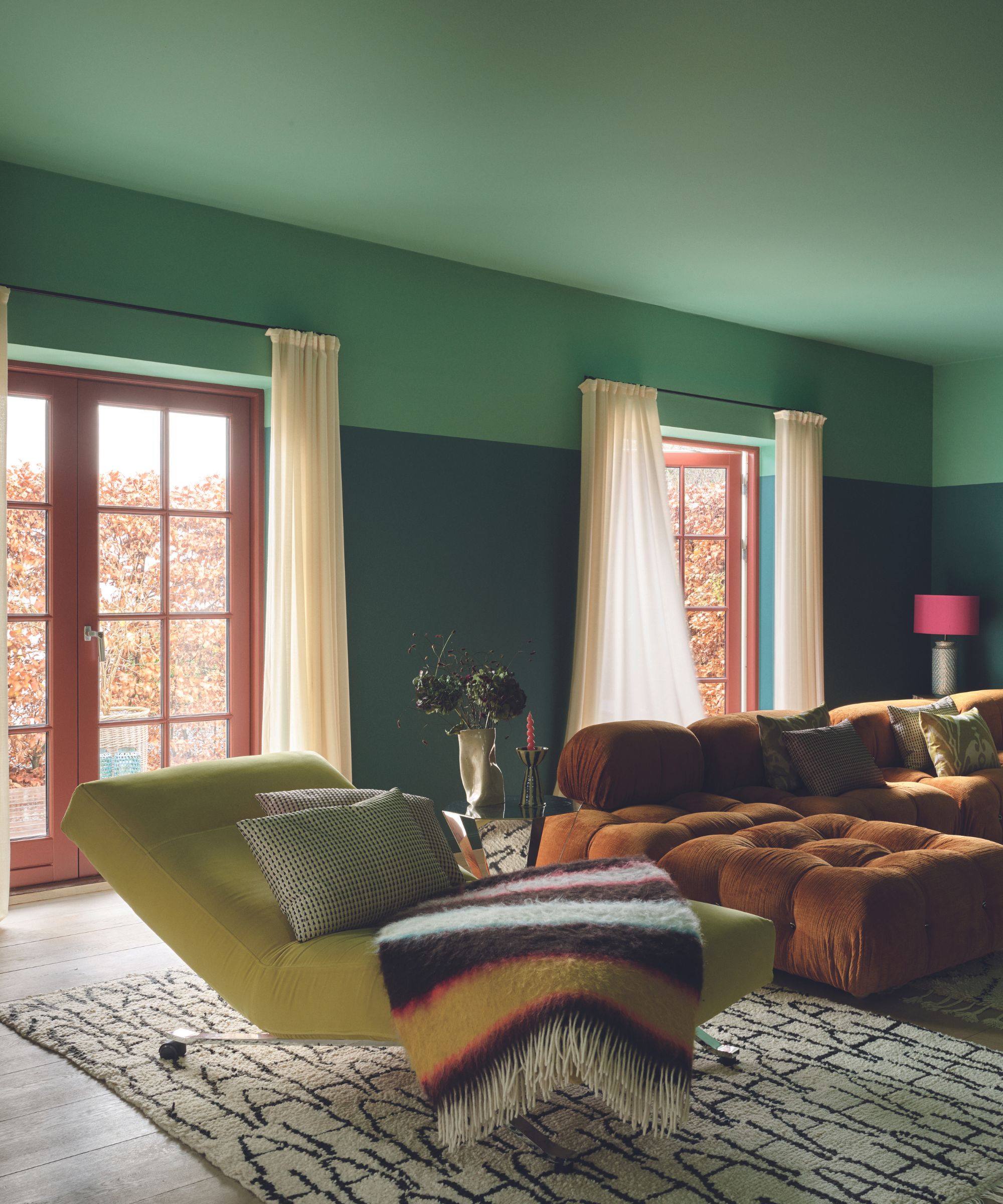Do curtains need to match? Interior designers share whether it's best to clash or compliment
Our team of interior design experts give their views


With a plethora of curtain ideas out there, it can be hard knowing where to start when it comes to picking the right set for a room. You need to think about what type of curtain you want for each room and the overall look you’re going for, whilst also making sure that you avoid any common curtain mistakes.
And within all the considerations is the decision on whether to choose curtains that match or not. You might think this is a simple choice, but actually much of this depends on your chosen style and the overall visual look you’re trying to create in a room. As with all interior design choices, the key is to create a look that’s balanced and cohesive – however dramatic or colorful your curtains ideas might be.
Do curtains need to match?

'While exact matching is not necessary, curtains should complement the room’s decor by coordinating in color, pattern, texture, and style,' explains Debbie Leigh, design manager at ILIV. 'Choosing curtains that harmonize with the existing design elements, such as the color scheme, furniture, and other soft furnishing, will help to create a stylish and cohesive look.'
Good window treatment ideas can make or break a room, as Pippa Jameson, interiors stylist, creative director at Pippa Jameson Interiors lays out, 'As you enter a room, the curtains are the furthest point from you. They need to provide a stable backdrop, grounding the space to help you read the rest of the decor.'
'In a contained area, curtains act like a picture frame, anchoring the room. Consistency in curtain design ensures a cohesive framework while allowing for diverse details within the room.'
Our interior design experts have lots of suggestions surrounding matching or mismatched curtains, so let’s see what they recommend.
Match your curtains for balance

'Mismatched curtains draw immediate attention and can make the room feel unbalanced,' says Pippa Jameson. 'Keeping them matched ensures a visually pleasing space.'
Design expertise in your inbox – from inspiring decorating ideas and beautiful celebrity homes to practical gardening advice and shopping round-ups.
This is a concept that Amy Youngblood, founder of Amy Youngblood Interiors agrees with, 'I typically like for curtains to match to set a consistent background for the space. Mismatched drapes near each other can really throw off the look, feel, and balance of a room.'
Because curtains should tie a room together, too many clashing and mismatched styles in close proximity to each other can really ruin the aesthetics of a space. Too many clashes in style, color or texture can look jarring and distracting to the eye.
As designer Kathy Kuo, CEO of Kathy Kuo Home sums up, 'Having all of the curtains within one room match is a nice way to add a visual throughline that feels intentional and cohesive. I love the idea of having different sets of curtains throughout the different rooms of a home, but I do think there's something to be said for matching curtains in any given distinctive room.'

Kathy Kuo is the CEO of Kathy Kuo Home, a recognised TV personality, and a celebrated interior designer. Published in the press as an international guru within the home and lifestyle space, Kathy has an unmatched eye for curating, sourcing and designing luxury furniture and homewares. Today, she continues to develop one of the fastest growing online platforms in the home and design industry. Kathy has 20+ years of experience in the home industry and now serves as a speaker and activist for female entrepreneurs. It is her mission to support women to intentionally grow and scale value-focused teams.
2. Remember that practicalities play a part

One size doesn’t fit all when it comes to curtains, and you need to think about the space you’re working with. As well as the look you want and the cohesive feel you need in a room, you’ll need to consider practical factors. As Claire Garner, director of Claire Garner Interiors, explains, 'Practicality should guide your choices. Consider the function, maintenance, and durability of the fabrics you choose, especially in high-traffic areas or rooms exposed to a lot of sunlight. Opting for fabrics that are easy to clean and maintain can save you time and effort in the long run.'
'It’s crucial to select treatments that are right for each window. For instance, if you have full-height doors that need covering, beautiful linen curtains would be ideal. On the other hand, if you have a smaller window in the same room with a radiator underneath, a Roman blind would be better suited. Mixing curtains and window blinds can provide both aesthetic appeal and functional benefits, tailored to the specific needs of each window.'
Tara Brien and Julie Croll from Roo’s House expand on this point, 'If each window in a room is different, they may not match in terms of treatment. For instance, a pelmet may be needed on one window, to bring the height down so that it balances with an adjacent window which might only have room for a curtain pole. In this instance when they don't match in style the color is the key, also imperative to ensure, if using a pattern, that this matches across the room.'
Mix pattern and solid color

A simple way to start bringing a little variety into your curtains is to introduce a mix of patterns and solid colors. The rule here is to choose fabrics that still work well together. You want fabrics and colors that blend, creating a harmonious rather than clashing effect. As Artem Kropovinsky, founder of Arsight says, 'The mixture of various patterns or textures can provide a visual element that is, at the same time, cohesive through color and material.'
How do you put this into practice? Tara Brien and Julie Croll suggest that 'Fabric can be alternated across a room. For example, a pretty floral curtain could be matched with a striped blind, however, to bring them together you could use the stripe as a trim on the floral curtain edging. Equally the face / front fabric could be swapped around so the pattern is on the front and the stripe is used as the lining. You also want to make sure there is a common color that flows between each of them to make them look like they were designed to be paired together.'
Claire Garner suggests using different patterns to divide up open plan spaces, 'You can mix patterns, which works particularly well in an open plan room to zone areas. For instance, you could have a printed fabric in the kitchen and then pick either a complimentary pattern or solid fabric for the dining area. This approach allows you to create distinct zones within an open space, providing visual interest and character without the need for physical barriers.' And Amy Youngblood agrees with this, 'In a very large room that is broken up into more than one type of area I believe drapes that don’t match but complement each other in pattern and color can add some division and interest to the space.'

Tara Brien is an E-commerce specialist with a passion for interiors and upholstery. With experience in start-ups and a keen eye for innovation, she founded Roo’s House to fill a gap in the market, making high-end interiors more accessible and affordable for all.
Julie Croll, with 25 years in interiors and experience in residential, commercial, and garden design was the perfect pairing to Tara. Noticing a rise in consumers wanting to use local makers, wanting to do things themselves and not needing a full interior design service, she saw a gap in the market for affordable fabric pairing assistance outside traditional interior design services.
Coordinate with the rest of the room

Standing slightly apart from the rest of the room, it’s easy to forget that curtains need to blend in with your other color choices in a space. As Claire Garner explains, 'Curtains do not necessarily need to match, but they should harmonize with the room’s décor. While complete matching is not necessary, coordination is key. Curtains and window treatments should complement the overall color scheme and style of the room. This doesn’t mean they have to be identical, but they should work together to create a cohesive look. Contrast can also be used effectively to highlight certain areas of the room or to draw attention to specific features.'
Debbie Leigh reminds us to think beyond colors as well, 'The texture of the curtains should also complement the textures present in the room, such as upholstery, rugs, and other textiles. For instance, heavy, luxurious fabrics like velvet might suit a more formal room, while light, airy fabrics like linen are better for casual spaces.'
She also suggests a simple way to coordinate your curtains, ;For a subtle look, pick a fabric for your curtains that is slightly lighter or darker than your wall tone. If you prefer a contrasting color, choose an accent color from in the room, drawing a shade from a cushion or throw for example. Neutral-coloured curtains (like white, beige, or grey) are versatile and can blend well with various interior styles and colour schemes. They provide a subtle backdrop that enhances other design elements.'
And by making sure you’re coordinating with the rest of the room, you may not need to match your curtains, as Artem Kropovinsky explains, 'Balancing different curtain choices with other elements like furniture or rugs makes the overall aesthetic harmonious, even if the curtains themselves don’t match.'
There’s a time and a place for both matching and mismatched curtains, with the key being to recognize what works for both your space and your individual interior design style.
As Martin Waller, founder of Andrew Martin, says: 'Curtains do not always have to match. In fact, embracing eclecticism and individuality can lead to more interesting and dynamic spaces. While matching curtains for all the windows in a room can create a cohesive and harmonious look, mixing different styles, textures, or colors can inject personality and character. The key is to ensure that there is a thoughtful balance and a common thread that ties the elements together, whether it's a subtle color palette, complementary patterns, or a unified design theme.'

Jo Plumridge is a freelance writer and photographer with over 20 years of experience writing for a variety of magazines, websites and books. She writes, perhaps unsurprisingly, about photography, but also on all things interior design and sleep-related, alongside reviews of home and tech products. Jo loves exploring the latest design trends, although she’s yet to find a carpet that doesn’t show up the cat hair from the cats she and her husband foster.